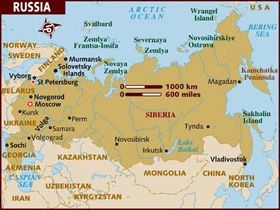Pharmacoeconomic Guidelines: Russian Federation
Country/Region: Russian Federation

Published PE Recommendations
Guidelines for conducting a comparative clinical and economic evaluation of drugs (2018) PDF in Russian
Guidelines for assessing the budget impact in the framework of the Programm of the State Guarantee of Free Medical Care in the Russian Federation (2018) PDF in Russian
Published PE Recommendations Source:
Additional Information:
Guidelines for modeling in clinical and economic evaluation and budget impact analysis of drugs PDF in Russian
Guidelines for cost calculation in clinical and economic evaluation of drugs PDF in Russian
Guidelines for multicriteria decision analysis (MCDA) in healthcare PDF in Russian
Guidelines for assessing a comparative clinical efficacy and safety of drugs PDF in Russian PDF in Russian
Meta-analysis guidelines PDF in Russian
Network meta-analysis guidelines PDF in Russian
Information current as of Tuesday, July 26, 2022
Key Features
| Key Features | |
|---|---|
| Type of Guidelines | Published PE Recommendations |
| Title and year of the document | Guidelines for conducting a comparative clinical and economic evaluation of drugs (2018); Guidelines for assessing the budget impact in the framework of the Program of the State Guarantee of Free Medical Care in the Russian Federation (2018) |
| Affiliation of authors | Center for Healthcare Quality Assessment and Control of the Ministry of Health of the Russian Federation |
| Purpose of the document | Provide a common methodology for conducting pharmacoeconomic studies, a common form of presenting and assessing results for drugs submitted for inclusion in restrictive (reimbursement) lists |
| Standard reporting format included | Yes |
| Disclosure | Yes |
| Target audience of funding/ author's interests | Decision-makers, healthcare authorities, researchers, pharmaceutical companies |
| Perspective | Healthcare payer |
| Indication | Approved indication |
| Target population | Relevant groups or sub-groups need to be defined and justified |
| Subgroup analysis | Yes |
| Choice of comparator | The most relevant alternative treatment for comparison is a drug included in restrictive lists of drugs for medical use and intended for use at same indications as the drug submitted for inclusion in restrictive lists; OR a combination of such drugs. Recommendation: If more than one relevant comparator is available the optimal alternative is the most effective drug; If there are several drugs with the same effectiveness the optimal alternative is the one with the lowest cost per course of treatment |
| Time horizon | Clinical and economic evaluation: the time horizon should be determined taking into account objective factors, such as duration of treatment or patient life expectancy and should be indicated and justified; Budget impact analysis: the time horizon can be from 1 to 5 years, it is necessary to present the results of the first year separately |
| Assumptions required | Yes, should be justified |
| Preferred analytical technique | The main method of pharmacoeconomic studies is CEA; CUA and CMA also can be used |
| Costs to be included | Direct medical costs are mandatory; accounting for other types of costs remains at the discretion of researchers and different types of costs are indicated separately |
| Source of costs | The identification and measurement of costs should be consistent with the perspective of the Russian healthcare payer |
| Modeling | Yes; a model should be justified and described in detail (indication(s), application conditions (outpatient or inpatient), choice of comparator, target population, criteria for evaluating the efficacy and safety, method of pharmacoeconomic study, time horizon, calculation of costs, sensitivity analysis-method), a software product should be described in Russian and be available for analysis |
| Systematic review of evidences | Yes, systematic review of the existing clinical studies of the medical intervention, including unpublished studies and studies with negative results. The search strategy should be reproducible and selection criteria and procedures clearly presented |
| Preference for effectiveness over efficacy | No |
| Preferred outcome measure | No mandatory requirements; clinical outcomes are preferred, surrogate outcomes can be used if there is evidence of association with the clinical outcomes |
| Preferred method to derive utility | EQ-5D using Russian value set |
| Equity issues stated | N/A |
| Discounting costs | 5% |
| Discounting outcomes | N/A |
| Sensitivity analysis-parameters and range | It is necessary to conduct sensitivity analysis of results to variations in the initial parameters (for CEA and CUA: variations of drug prices, change in the value of efficacy; for CMA: variations of drug prices; for BIA: variations of drug prices, the size of the target population and the number (proportion) of patients receiving the drug submitted for inclusion in restrictive lists) |
| Sensitivity analysis-methods | Not regulated |
| Presenting results | Special form with the following parameters: a name of the submitted drug, formulation(s), indication(s), application conditions and funding sources, the time horizon, the target population, criteria for evaluating the efficacy and safety, costs, method of pharmacoeconomic study (CEA, CUA, CMA), results (ICER, ICUR), sensitivity analysis, conclusion |
| Incremental analysis | Yes; if not only direct medical costs were used the incremental cost-effectiveness ratio should be presented separately: for direct medical costs; for direct medical and non-medical costs; for overall costs |
| Total costs vs effectiveness (cost/effectiveness ratio) | Yes; if not only direct medical costs were used the cost-effectiveness ratio should be presented separately: for direct medical costs; for direct medical and non-medical costs; for overall costs |
| Portability of results (Generalizability) | N/A |
| Financial impact analysis | Yes; budget impact analysis is based on direct medical costs only |
| Mandatory or recommended or voluntary | Recommended |
Acknowledgement: